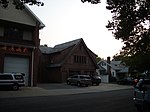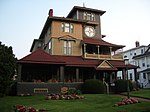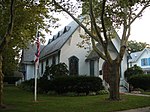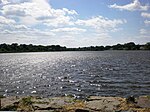Spring Lake, New Jersey
1892 establishments in New JerseyBorough form of New Jersey governmentBoroughs in Monmouth County, New JerseyIrish-American neighborhoodsJersey Shore communities in Monmouth County ... and 4 more
Populated places established in 1892Spring Lake, New JerseyUse American English from March 2020Use mdy dates from March 2020

Spring Lake is a borough situated on the Jersey Shore in Monmouth County, in the U.S. state of New Jersey. As of the 2020 United States census, the borough's population was 2,789, a decrease of 204 (−6.8%) from the 2010 census count of 2,993, which in turn reflected a decline of 574 (−16.1%) from the 3,567 counted in the 2000 census.New Jersey Monthly magazine ranked Spring Lake as the 240th best place to live in New Jersey in its 2010 rankings of the "Best Places To Live" in New Jersey.In 2012, Forbes.com listed Spring Lake as 187th in its listing of "America's Most Expensive ZIP Codes", with a median home price of $1,190,586.
Excerpt from the Wikipedia article Spring Lake, New Jersey (License: CC BY-SA 3.0, Authors, Images).Spring Lake, New Jersey
Washington Avenue,
Geographical coordinates (GPS) Address Nearby Places Show on map
Geographical coordinates (GPS)
| Latitude | Longitude |
|---|---|
| N 40.153764 ° | E -74.026853 ° |
Address
Washington Avenue
07762
New Jersey, United States
Open on Google Maps







